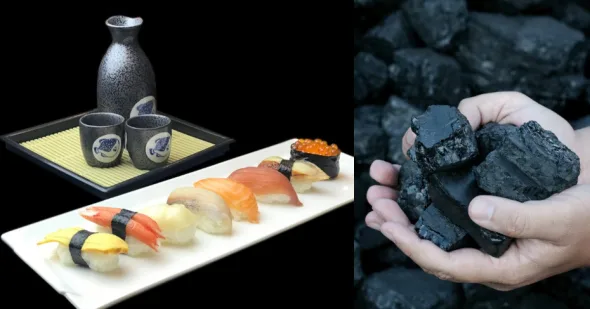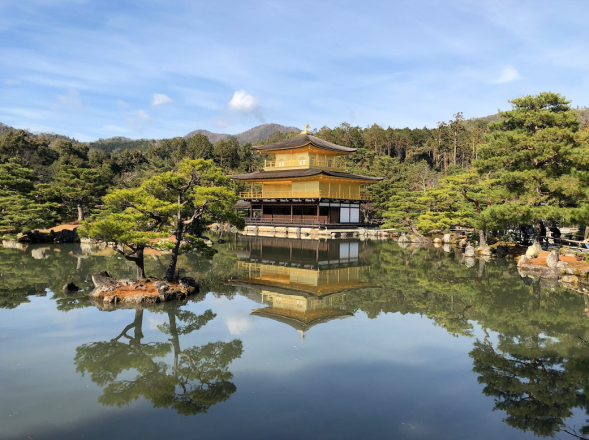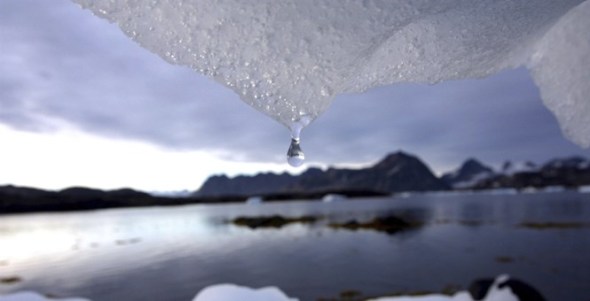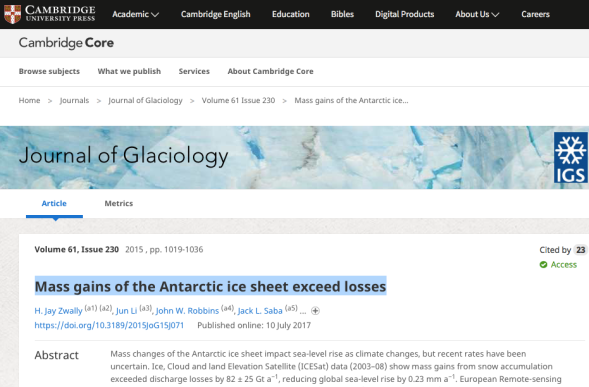Vijay Jayaraj : India Crafts Fossil Pathway To Secure Its Future
Posted: July 14, 2020 Filed under: Climate Change, Energy | Tags: coal, Energy, Energy Security, HELE, India, Vijay Jayaraj Leave a comment“In some countries ’emissions’ obsessed leaders stumble around looking for non-existent net-zero pathways to their imaginary climate heaven. But India’s recent approach towards fossil utilization can be summed up in three words: ‘No Holds Barred’, says the author.”
INDIA also understands the meaning of four other words pertinent to wind/solar utilisation: “Go woke, go broke.”
Tallbloke's Talkshop
 Credit: Coal India Limited
Credit: Coal India Limited
In some countries ’emissions’ obsessed leaders stumble around looking for non-existent net-zero pathways to their imaginary climate heaven. But India’s recent approach towards fossil utilization can be summed up in three words: “No Holds Barred”, says the author.
– – –
India is on the way to becoming a fossil fuel-based energy powerhouse of the 21st century, says Vijay Jayaraj @ The Global Warming Policy Forum (GWPF).
India’s developmental goals for the future are quite ambitious. They ought to be: From tackling the surging poverty rates to providing affordable utilities, the country faces a steep challenge.
The key to achieving any of its developmental goals is a strong energy sector.
India is the third largest energy consuming nation and is following the fossil fuel pathway (like the West did during the 20th century) to achieve energy independence in the near future.
View original post 206 more words
JAPAN ACKNOWLEDGES THE GLOBAL WARMING ‘PAUSE’ : Sanctions 35 New Coal Power Plants Added To The 100 Currently Operational
Posted: February 22, 2019 Filed under: Alarmism Debunked, Climate science, Climategate, Climatism, CO2, Empirical Evidence, Failed Climate Models, Fossil Fuels, Global Temperature, Green New Deal, Satellite Data, State Of The Climate, The Pause | Tags: "The Pause", Climate Change, Climate science, Climategate, coal, Fossil Fuels, Fukushima, Global Temperature, Global Warming, Global Warming Hiatus, Green New Deal, HELE, Japan, Japan Meteorological Agency (JMA), JMA, Prime Minister Shinzō Abe, Satellite Data, Ultra-Supercritical Coal Power Plant, Vijay Jayaraj, warming pause 6 Comments
Sushi, Sake, and Coal: Japan’s Peculiar Response to the Climate Conundrum » BarbWire
“The fact is that we can’t account for the lack of warming
at the moment and it is a travesty that we can’t.”
– Kevin Trenberth, National Center For Atmospheric Research, USA (2009)
“Observations do not show rising temperatures throughout the
tropical troposphere … This is just downright dangerous.”
– Peter Thorne, Hadley Centre, Met Office, UK (2007)
***
THE Japanese government has identified and acknowledged the current ~20 year-long global warming “pause” or “hiatus”. The (inconvenient) atmospheric phenomenon that has been the subject of much research and debate in peer-reviewed scientific journals for many years now.
BASED on data from the Japan Meteorological Agency (JMA), the government has justified the expansion of its global-leading, ultra-supercritical HELE coal-fired power plant technology both domestically and abroad.
PRIME MINISTER Abe has sanctioned the addition of 35 new coal power plants to the 100 currently operational.
“Japan’s use of coal is not justified exclusively on the basis of the country’s nuclear debacle. The heart of the reason is Japan’s climate.
For the past three decades, there has been no significant warming in its major cities.”
*
CLIMATE Scientist Vijay Jayaraj reports (Climatism attachments, bolds added) :
Sushi, Sake, and Coal: Japan’s Peculiar Response to the Climate Conundrum
We all know that the Japanese love their sushi. Japan is also famous for sake, a rice wine unique to the country. Lately, the Japanese have shown unrestrained love for a commodity that is increasingly demonized by climate groups: coal.
Global warming alarmists blame coal for causing dangerous global warming. But the Japanese beg to differ. They have revived their love affair with coal. Why? That’s an interesting story.
Soon after the Fukushima nuclear incident, public sentiment towards nuclear energy became hostile. Many organizations, including foreign non-profits, called for the closure of nuclear plants on fears of future mishaps.
The Fukushima plant was outdated and less safe than Japan’s other, modern nuclear plants. Yet, the impact of the Fukushima disaster (in which no one died from radiation exposure) remains fresh in people’s minds, and the nation was not ready to defend the operations of other nuclear plants.
The Japanese government caved in to the pressure and closed many nuclear plants. By 27 March 2012, Japan had only one out of 54 nuclear reactors operating. As a result, the country was forced to seek alternative sources of energy generation.
The Japanese understood that renewable sources like wind and solar could not provide stable and affordable electricity, at least not in the magnitude necessary to meet peak energy demands of Japan’s power-guzzling cities.
The most economical and safe solution was coal. Contrary to popular belief and the mainstream media, coal is not as polluting as you might think.
Moreover, coal is a tried and tested source of energy, guaranteeing superior-quality, stable output to meet the energy demands of modern cities and industries.
With the development of “clean coal technology,” coal combustion now results in fewer contaminants and more energy, making it far superior to the combustion plants of previous decades.

HELE (High Energy Low Emissions) Ultra-Supercritical Coal Power Plant
So, Japan went against the tide and embraced coal with both arms.
It now employs the most advanced and safest coal combustion technology available on the planet, becoming a leading manufacturer and exporter of clean coal technology.
But Japan’s use of coal is not justified exclusively on the basis of the country’s nuclear debacle. The heart of the reason is Japan’s climate.
For the past three decades, there has been no significant warming in its major cities.
Data from the Japan Meteorological Agency (JMA) clearly indicates that there has been no significant deviation in the monthly average temperature between 1998 and 2018. The period between is of special importance to the Japanese government.
As per the climate doomsday theorists, temperatures should have displayed a strong warming trend as the manmade carbon dioxide emissions increased exponentially.
But the temperature levels failed to display any warming trend. That flies in the face of the notion that atmospheric carbon dioxide concentration levels control temperature over the island nation—or, for that matter, the world.
Last week, Sapporo recorded its coldest day in 40 years. In fact, winter in Japan had no warming trend from 1986 to 2018, with the January monthly mean temperature anomalies displaying a cooling trend. If anything, there has been a cooling trend in Japan between 1998 and 2018.
So, the reason for Japanese embrace of coal is pretty clear: no significant warming, coupled with the post-Fukushima anti-nuclear hysteria.
No country would want to reduce its emissions when its monthly average temperatures are actually decreasing. It is for this reason that Japanese Prime Minister Shinzō Abe refuses to stay true to the hasty anti-coal commitments he made at the UN’s international climate summits.
Instead of discouraging the use of coal, Japan is increasing its dependency on coal. Abe has sanctioned the addition of 35 new coal power plants to the 100 currently operational. The country is also encouraging its Asian neighbors and other developing countries to purchase its clean coal technology.
The Japanese response to the anti-coal establishment, besides being bold, accurately reflects climate reality. Japan understands the need to prioritize the domestic energy needs over faulty, pseudo-scientific forecasts of climate doom.
The lack of warming, however, is not limited to Japan. Satellite temperature measurements (between 1979 and January 2019) show no significant warming in the earth’s atmosphere during the past 19 years.
Other countries should emulate Japan’s example, especially in the developing world. Domestic energy needs are far too important to be slain on the altar of global warming hysteria.
Sushi, Sake, and Coal: Japan’s Peculiar Response to the Climate Conundrum » BarbWire
![]()
FOLLOW Vijay on Twitter : @vjxxvj
***
REFRESHING to see government energy policy being driven by empirical evidence and real-world data, and NOT by fear, hysteria, mainstream media climate change advocacy and alarmism or politically-driven, CO2-centric, UN IPCC climate models.
BRAVO Japan for standing up to the climate groupthink bullies and misanthropic eco-activists. Instead, supporting their industry and citizens by providing them with cheap, abundant and clean (HELE) coal-fired power technology to advance and maintain their world-renowned pristine environment, civic cleanliness, health and wealth!
“The Japanese response to the anti-coal establishment, besides being bold, accurately reflects climate reality. Japan understands the need to prioritize the domestic energy needs over faulty, pseudo-scientific forecasts of climate doom.”
***
PIC of Kinkaku-ji Palace Kyoto from my recent family trip to ‘pristine’ HELE powered Japan!
IF you haven’t been to Japan – GO! Incredible people, culture and country…

Jamie Japan Trip – Kinkaku-ji Royal Palace Kyoto – Jan 2019 (iPhone 8 – No filter!)
•••
SEE also :
- THE Great Global Warming “Pause” | Climatism
- 100% Of Climate Models Prove that 97% of Climate Scientists Were Wrong! | Climatism (CMIP5 Climate Models)
- FATHER Of The 2°C Climate Target Admits Number Is Fabricated : ‘Two degrees is not a magical limit; it’s clearly a political goal’ | Climatism (UN IPCC)
- CLIMATE CHANGE : The Unsettled Science Of “Settled” Science | Climatism (ECS)
HOTTEST Arctic Ever? Arctic Climate Change Fairytales vs. Reality
Posted: March 10, 2018 Filed under: Alarmism, Alarmism Debunked, Antarctic, Antarctica, Arctic, Fact Check, Medieval Warm Period, Propaganda, Pseudo-Science | Tags: Alarmism, antarctic, Antarctica, arctic, Arctic alarmsim, Arctic Sea Ice, Climate alarmism, Climate Change, Earth Sciences, Environmental Science, Fake News, Global Warming, Greenland, Holocene, Hysteria, Medieval Warm Period, Nuuk, Roman Warming Period, Vijay Jayaraj, Weather, Weather alarmism 1 Comment
Hottest Arctic Ever? Arctic Climate Change Fairytales vs. Reality – Vijay Jayaraj
EXCELLENT piece by our friend and environmental scientist Vijay Jayaraj on the recent mass hysteria over the supposed “hottest day evah” in the Arctic.
Vijay’s piece, featured in Town Hall, demonstrates how the Climate Crisis Industry will latch on to any daily (hot) weather event in order to push their CAGW agenda yelling “GLOBAL WARMING” without any consideration for historical reference or indeed common sense…
“Those who count the Arctic warmth as evidence for global warming should count the Eurasian [cold] as evidence for global cooling”

This week, social media and mainstream media were abuzz with news about the record Arctic heat and how we humans are destroying our planet through climate change.
While we brace for a barrage of climate doomsday news, here is the actual reality of climatic conditions at the Arctic and reasons why we are not in imminent danger.
On 26 February, temperatures in some regions of the Arctic hovered around the freezing point (zero degree Celsius)—a record high for this time of year in the satellite era temperature readings (which began in the late 1970s).
But the current rise in Arctic temperature is due not to changes in global average temperature but to changes in regional weather patterns. Changes in the weather system across the Scandinavian region are pushing very warm, moisture-laden Atlantic air into the Arctic and very cold Arctic air into Northern Eurasia, leading much of Europe into a deep freeze this week.
(Those who count the Arctic warmth as evidence for global warming should count the Eurasian code [cold] as evidence for global cooling.)
The same has been prevalent over North America this week, resulting in a colder than normal winter in some parts while temperatures soar towards the east coast.
To understand the sudden peak in arctic temperatures, it is critical to analyze two key elements associated with the Arctic climate: 1. past temperature trends, and 2. the historic variations of the sea ice cover in the Arctic.
Temperature records for the Arctic reveal that the current rise in temperature is not unusual.
The weighted Arctic (70–90oN) monthly surface air temperature anomalies (from HadCRUT4) show that average surface temperatures in the Arctic have not increased significantly since the 1930s.
Long-term (1880–2018) Arctic surface annual air temperature series from Nuuk, Greenland, show that the high temperatures in the recent years are not significantly higher than the previous 14 decades.
Climate alarmists argue that these high temperatures lead to extreme reduction in sea ice levels and upset the eco-system of the planet.
However, sea ice variations reveal a similar pattern to that of temperature—there has been no extreme reduction of sea ice in recent decades.
The latest studies on Arctic sea ice indicate that sea ice cover during the 20th century did not depart significantly from the record sea ice levels during the Little Ice Age (1600–1700 AD).
And understandably, the sea ice cover was at its 2000-year low during the Medieval Warm Period (1000-1200 AD) and during the Roman Warm Period (around 0 AD).
If one were to consider longer temperature data series, such as the entire Holocene (the warm climatic era that constitutes the last 11,700 years approximately), we have no reason to panic about sea ice cover.
Sea ice cover in the 20th century was at its highest ever (excluding the Little Ice Age of 16thcentury) in the last 11,000 years.
Solar activity, and not carbon dioxide, was found to be the main reason for changes in the historical sea ice variations.
The current sea ice loss is not extraordinary by any means, and the Arctic ecosystem survived through much lower ice cover extent in the past 2000 years.
Lying about sea ice and temperatures is not new for the climate alarmists, and their hypocrisy will surely reach new heights this spring.
Vijay Jayaraj (M.Sc., Environmental Science, University of East Anglia, England), Research Associate for Developing Countries for the Cornwall Alliance for the Stewardship of Creation, lives in Coimbatore, India.
Hottest Arctic Ever? Arctic Climate Change Fairytales vs. Reality – Vijay Jayaraj |Town Hall
(Climatism bolds)
•••
MEANWHILE, as the climate mafia bloviates inside their WEATHER = CLIMATE bubble, the other conveniently forgotten pole, Antarctica, continues its long 40 year+ cooling trend, gaining ice mass despite record and rising CO2 levels and claims of “The Hottest Years Evah“…

From the abstract:
Mass changes of the Antarctic ice sheet impact sea-level rise as climate changes, but recent rates have been uncertain. Ice, Cloud and land Elevation Satellite (ICESat) data (2003–08) show mass gains from snow accumulation exceeded discharge losses by 82 ± 25 Gt a−1, reducing global sea-level rise by 0.23 mm a−1.
Mass gains of the Antarctic ice sheet exceed losses | Journal of Glaciology | Cambridge Core
*
DON’T MENTION THE SUN!
“The role of the lowest solar cycle for at least a century is mostly ignored by believers in man-made global warming. There are signs of climate change, but not necessarily the kind they expect.” – Rog Tallbloke
Icy Europe, balmy North Pole: the world upside down | Tallbloke’s Talkshop
•••
Related :
- Delingpole: NOAA Caught Lying About Arctic Sea Ice
- THERE’S Nothing Unprecedented About Our Current Weather – Booker | Climatism
- 8 INCHES Of Catastrophic Global Warming Cooks Dutch Canals | Climatism
- “THE PAUSE” Lives On : Global Temperatures Continue To Cool Despite Record And Rising CO2 Emissions | Climatism
- LIFE Inside The Global Warming Bubble | Climatism
- ARCTIC Alarmists Hit New Records Of Hysteria | Climatism
- “HOTTEST YEAR EVAH” Claims Tell Us More About Global Warming PR Than Actual Science | Climatism
- LIVING Life With “Atmosphere Cancer” | Climatism
Climate Science related :
- 100% Of Climate Models Prove that 97% of Climate Scientists Were Wrong! | Climatism
- THE Climate Change Farce Explained By Two Expert “Scientists” | Climatism
- WORLD Leading Authority : Climate and Sea Level Science Is A “Quasi Religion” Hijacked By An Activist Agenda | Climatism
- THE “97% Consensus” Meme Further Discredited By 97 New Papers Supporting A Skeptical Position On Climate Alarm | Climatism
- THE Great Global Warming “Pause” | Climatism



Recent Comments